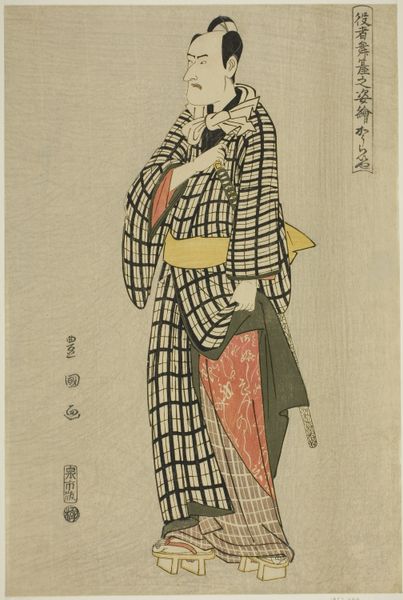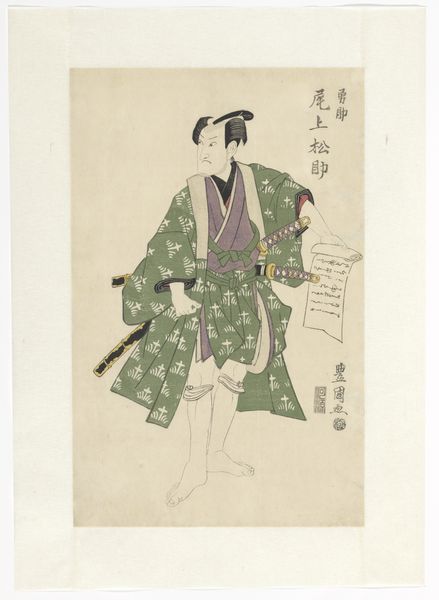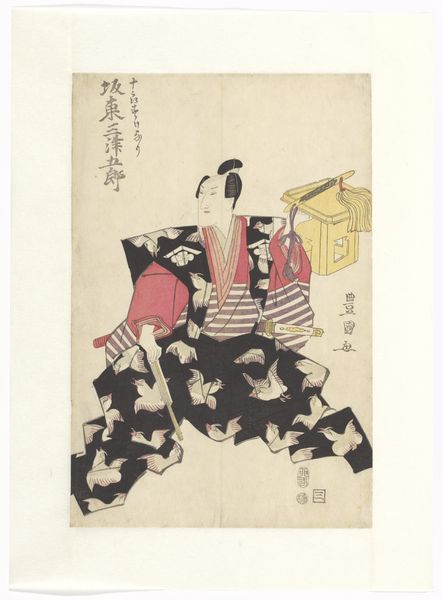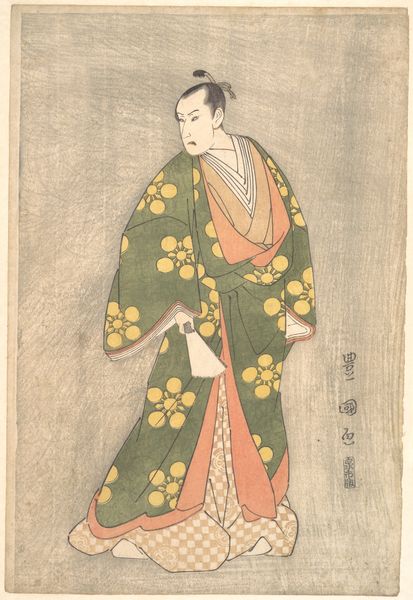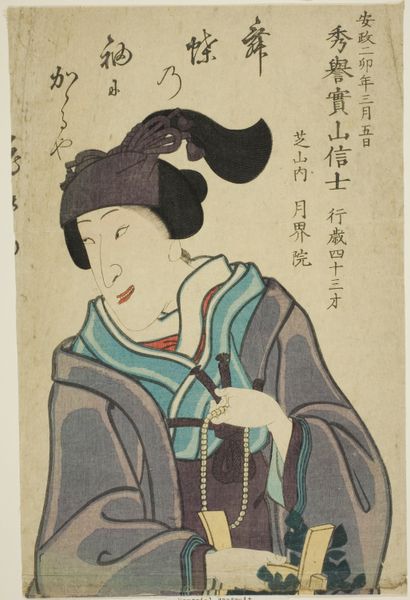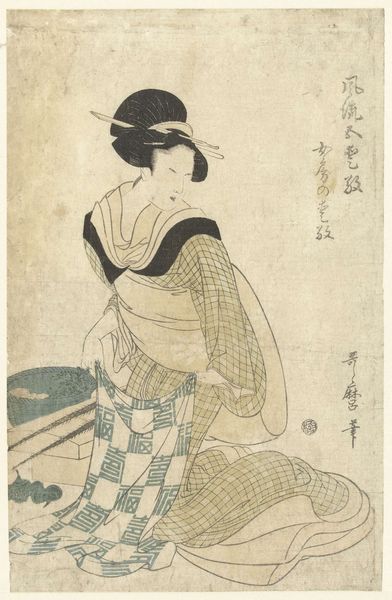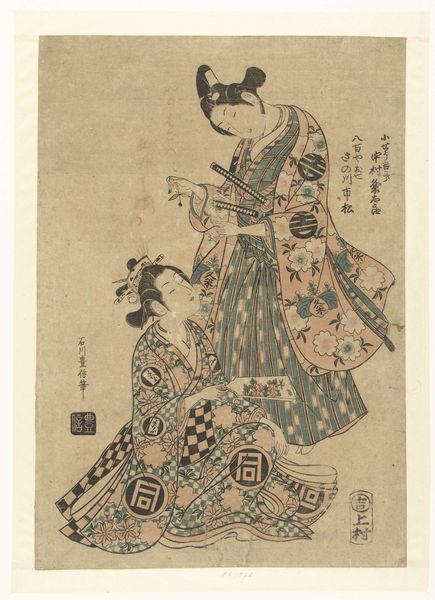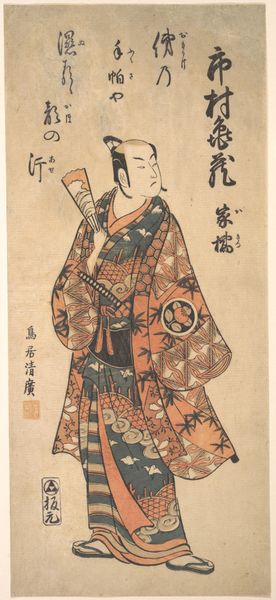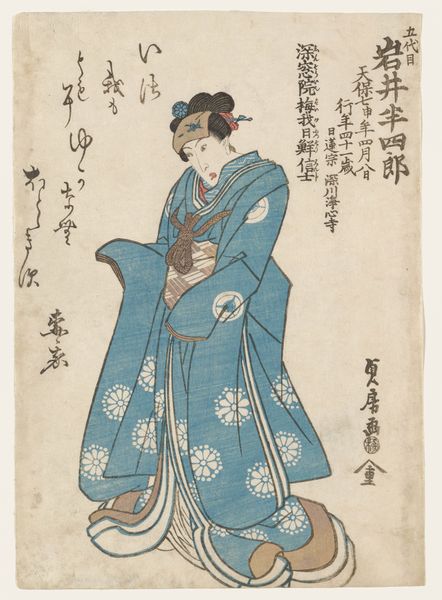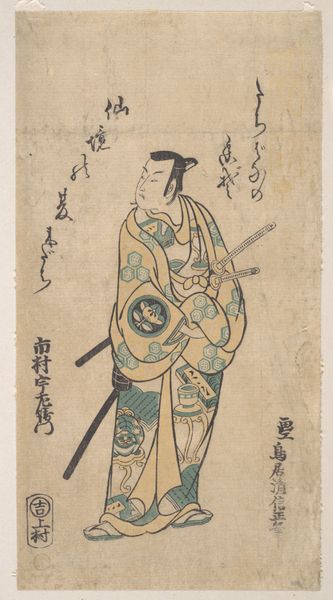
print, woodblock-print
#
portrait
#
16_19th-century
# print
#
asian-art
#
ukiyo-e
#
historical fashion
#
woodblock-print
#
genre-painting
Dimensions: height 373 mm, width 250 mm
Copyright: Rijks Museum: Open Domain
Curator: The Rijksmuseum holds this intriguing woodblock print from around 1813, titled "Kameya Chûbei in chequered kimono" created by Utagawa Toyokuni I. Editor: That chequered pattern is arresting. It almost feels jarring to the eye, like a visual discord compared to what I think of as typical, harmonious ukiyo-e style. Curator: It is indeed quite striking. What you're responding to is Toyokuni’s intention. He was working in the *yakusha-e* tradition, depicting Kabuki actors. Here, we see Kameya Chûbei, known for his role in a tragic love story. The chequered kimono—the *ichimatsu moyo*—actually gained popularity because another actor, Sanogawa Ichimatsu III, often wore it on stage, associating it with fashion and modernity. Editor: So the clothing is a symbolic language unto itself, indicating modernity while perhaps alluding to deeper layers of association? It does strike a somber pose. Is there significance to his posture, his expression? Curator: The pose captures a fleeting moment of inner turmoil. Kabuki demanded exaggerated expressions to convey character. He seems caught between anger and sadness, maybe reflecting the emotional weight of the role. Consider how theatrical prints like these served as both advertisements and memorabilia—essential cultural currency. Editor: Interesting. So, what seems like an aesthetic choice on the surface—that audacious checkered pattern—was actually deeply intertwined with celebrity culture and the performance traditions of its time. Curator: Precisely. The actor’s fashion sense became synonymous with character and status, effectively blending theatrical illusion and the everyday culture of the viewers who are buying these prints. The checked pattern, originally connected to Ichimatsu, became iconic—its symbolism layered by associations to this specific role that Toyokuni has captured. Editor: Thinking about art's function this way, moving beyond just aesthetics and digging into cultural relevance, unlocks new perspectives for us to truly see. Curator: Indeed, revealing how cultural memory is often vividly woven into something as ostensibly straightforward as the depiction of a fashionable garment.
Comments
No comments
Be the first to comment and join the conversation on the ultimate creative platform.
